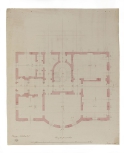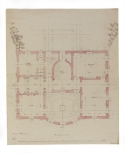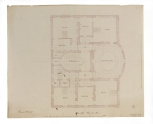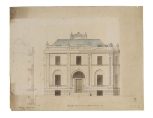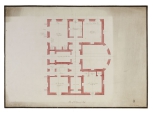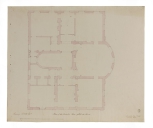Drawing
Pell Wall Hall, Market Drayton, Staffordshire (previously Shropshire): (executed) house, stables and garden for Purney Sillitoe, 1822-1828 (58)
[1] Variant preliminary design for the ground floor, 7 March 1822
7th March 1822
Possibly George Ives, draughtsman
George Ives (Soane assistant, 1821-22), Charles Papendiek (pupil 1818-24) and/or Arthur Patrick Mee (1802-1868, pupil 1818-24)
Possibly Charles Edward Papendiek (1801 - 1835), draughtsman
George Ives (Soane assistant, 1821-22), Charles Papendiek (pupil 1818-24) and/or Arthur Patrick Mee (1802-1868, pupil 1818-24)
Possibly Mee, Arthur Patrick (1802--1868), draughtsman
George Ives (Soane assistant, 1821-22), Charles Papendiek (pupil 1818-24) and/or Arthur Patrick Mee (1802-1868, pupil 1818-24)
SM 35/6/10


